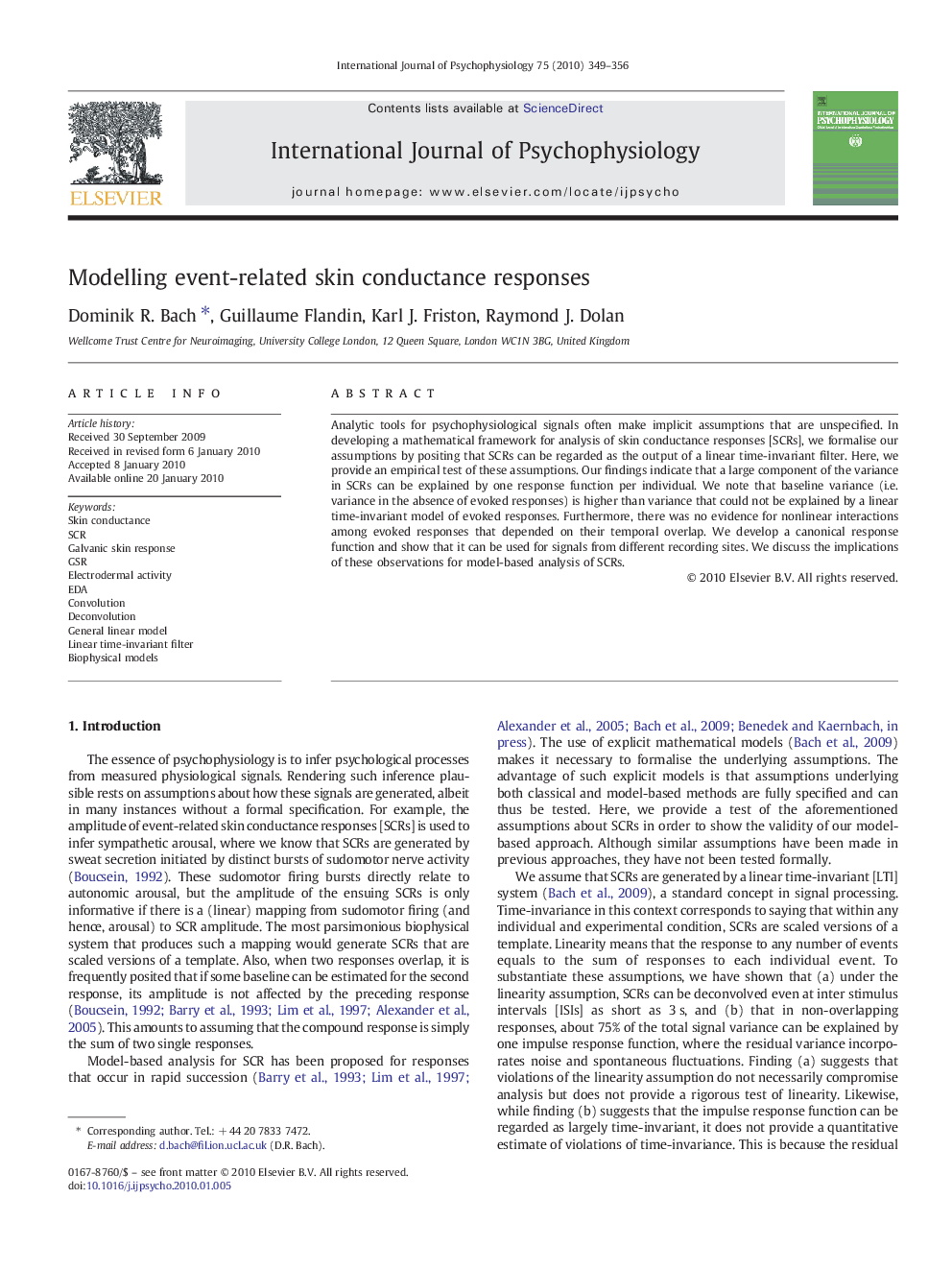| Article ID | Journal | Published Year | Pages | File Type |
|---|---|---|---|---|
| 7296336 | International Journal of Psychophysiology | 2010 | 8 Pages |
Abstract
Analytic tools for psychophysiological signals often make implicit assumptions that are unspecified. In developing a mathematical framework for analysis of skin conductance responses [SCRs], we formalise our assumptions by positing that SCRs can be regarded as the output of a linear time-invariant filter. Here, we provide an empirical test of these assumptions. Our findings indicate that a large component of the variance in SCRs can be explained by one response function per individual. We note that baseline variance (i.e. variance in the absence of evoked responses) is higher than variance that could not be explained by a linear time-invariant model of evoked responses. Furthermore, there was no evidence for nonlinear interactions among evoked responses that depended on their temporal overlap. We develop a canonical response function and show that it can be used for signals from different recording sites. We discuss the implications of these observations for model-based analysis of SCRs.
Keywords
Related Topics
Life Sciences
Neuroscience
Behavioral Neuroscience
Authors
Dominik R. Bach, Guillaume Flandin, Karl J. Friston, Raymond J. Dolan,
